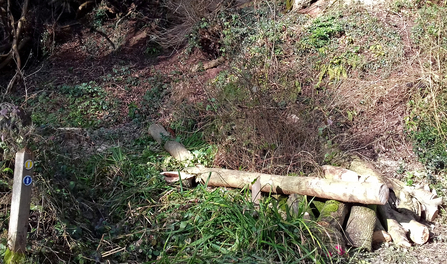As I near the fourth month into my traineeship and have visited a variety of nature reserves, my favourites so far have been the woodlands – Chaddesley and the woodland at The Knapp and Papermill are currently top of the list but all of the woodlands I’ve been to have offered me something different.
I recently visited Trench Wood and watched a fox wander up the path in front of me, which was lovely to see, whilst Tiddesley gave me my first taste of coppicing – the list could go on. The vastness of woodlands is somewhat overwhelming and you can completely forget where you are and be totally immersed in nature within them – just one of the reasons I love them.
It seems fitting to talk about woodlands during National Tree Week which this year runs from 27th November to 5th December. I’m sure we are all aware of just how important trees are not only for ourselves but for wildlife too and I hadn’t realised just how much management is needed to ensure a woodland is able to work at its best for both flora and fauna.
My tree knowledge was quite limited when I started the traineeship - I knew very few but over the past few months with help from Iain, my supervisor, I’m slowly beginning to be able to recognise different species (a surprise tree quiz while out on a task seems to be doing the trick, thanks Iain).


